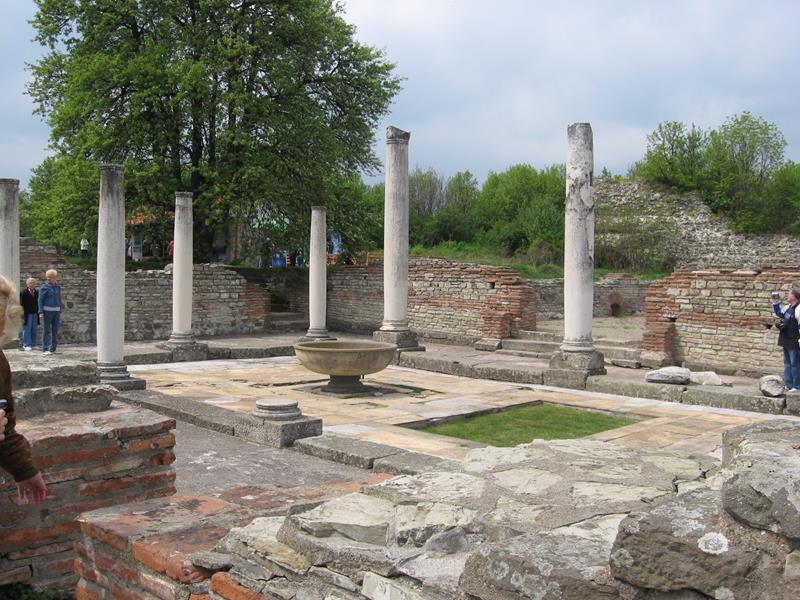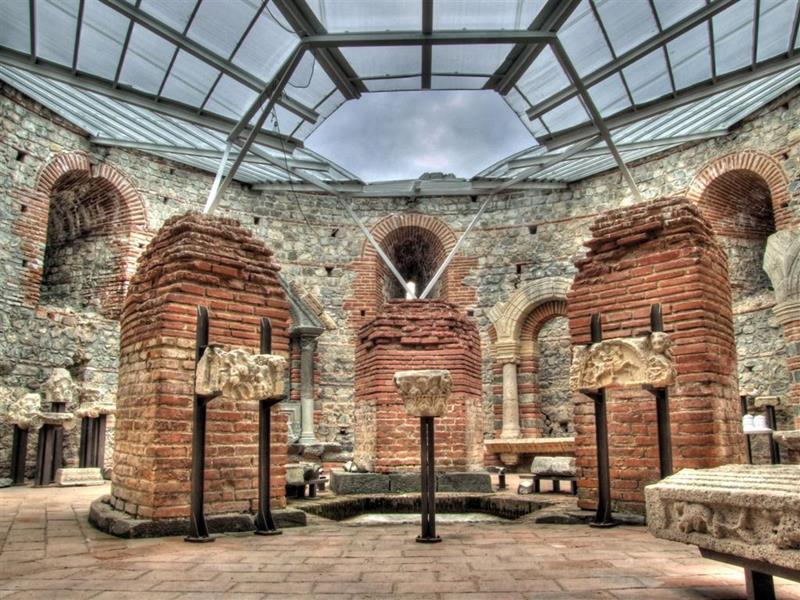.jpg.jpg)
.jpg.jpg)
.jpg.jpg)
.jpg.jpg)
.jpg.jpg)
.jpg.jpg)
.jpg.jpg)
.jpg.jpg)
Gamzigrad is UNESCO World Heritage Site of Serbia, located south of the Danube river, near the city of Zaječar. It is the location of the ancient Roman complex of palaces and temples Felix Romuliana, built by Emperor Galerius. The main area covers 10 acres (40,000 m2).
“Gamzigrad is one of the most magnificent monuments of the past...”
...“one of the largest and best preserved monuments of Roman architecture in Europe”
-F. Kanitz, Austrian Archeolog , who has visited the site in 1860 and 1864
Felix Romuliana is a popular tourist stop on the Roman Emperors' trail which links the birthplaces of over 17 Roman Emperors born on the territory of modern Serbia.
The Roman Emperor Gar Valerie Maximilian, who was born on the territory of East Serbia, known as Galerie, translated as cowboy, named palace after is mother. His palace, whose building started in 306, is one of the monumental achievements of Roman Architecture. Romuliana was decorated with mosaics of extraordinary beauty as well as altars, baths and monumental gates, partially preserved to the very day. Not far from the palace, on the uplift, there is a tumulus, where it is assumed that emperor Galierie was ceremoniously cremated, who had the title of Caesar as well.

Archaeological excavations on the site have unearthed the remains of a Roman compound with 2 temples, 2 palaces and a building with corridor including exceptionally fine mosaics depicting Greek gods Dionysos and Medusa, figural capitals of Hercules, baths and impressive gates. Several valuable hoards of Roman gold coins have been unearthed at the site, which continues to yield important Roman treasures and artifacts.
Pilasters of Emperors Diocletian, Maximian, Galerius, Licinius, Maximinus and Constantine are among spectacular finds. In the two mausolea on the Magura hill Romula and the founder Galerius were buried and deified.
Among the most important finds from the site are portraits of Roman emperors made from the Egyptian purple stone called porphyry and coins that help to accurately date the complex. A sculpture of Diana, the goddess of hunt, was unearthed in July 2010 by German and Serbian archeology teams, experts said that horse and a rider are missing which symbolizes victory over the Barbarians.
Alongside the Latin inscriptions throughout the complex, several Greek inscriptions are found.
The northwestern part was renovated; basilicas were built, during the rule of Emperor Justinian.
